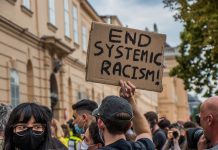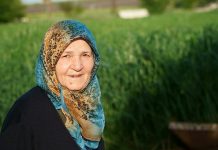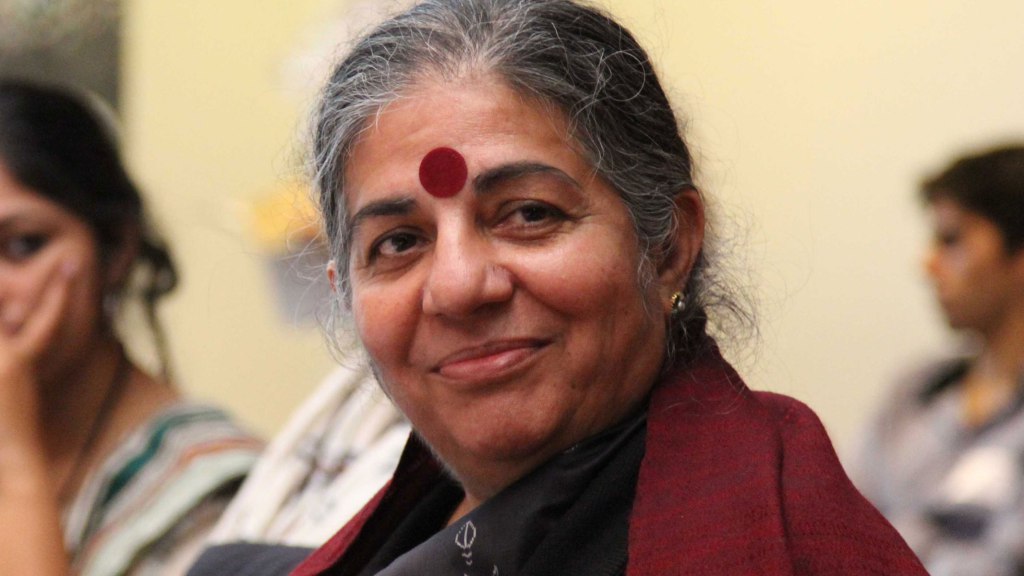Violence and aggression cast a dark shadow on the beautiful period of childhood. A researcher shares a biographical account of growing up in the North east, and explores whether education can be a truly emancipatory force and remind us of the ethos of love and peace that we seem to have forgotten?
Warlords and beneficiaries of hate and violence! Your macabre acts have distorted this splendid scenic valley to a killing field & every soul with a glut of commodified violence from womb to tomb. Nestled in nature’s abundance, this unquiet valley was once peaceful where bombs, guns and inhuman acts were alien. End violence in dialogue and peace. Every soul is created out of loving and nurturing; set it free from the prison of hate & violence; let it celebrate its true being from womb to tomb.
By Dr. Jeebanlata Salam is a passionate researcher /teacher who believes in celebrating life as it unfolds itself.
Living in the shadow of violence, from womb to tomb, I open this discussion in despair. Yet, deep down inside I am hopeful that we will live in a violence free society someday. Life in northeast India is often locked up in violent eruptions, which traverse between moments of deep sorrow and a heart longing for peace and justice. Young people often struggle to cope with a devastated and estranged life. Children live in a world where peace, safety and protection are elusive. A child is ever innocent, trustful, bright, and inquisitive; he/she learns fast with unique ways of feeling, seeing and perception of their immediate social world. A child’s journey into adulthood is just like the journey of a tree or a flower from a bud. How then, a child growing up in a wretched society, which lacks love, compassion and dialogue, can freely develop with a loving, compassionate and happy soul!
Insurgency and Violence in India’s Northeast
Ever since the British withdrawal from the Indian sub-continent, armed insurgent groups have flourished in northeast India, with repressive state forces as a response, accompanied by rampant human rights abuses of civilians due to unrestrained terror tactics used by both state and insurgents. The longest Naga insurgent, NSCN, initially demanding secession from India and later physical integration of all Naga inhabited areas of Manipur, Assam and Arunachal Pradesh entered into ceasefire with the Indian army in 1997, after much bloodshed and suffering a series of setbacks. On the contrary, insurgency in Assam, with huge student support and radical left, is linked to the exodus of Muslim refugees from East Pakistan that began way back in 30s. The United Liberation Front of Asom, formed in 1979 with radical left and students’ support directed their movements to migration issue. For almost a decade Assam was in turmoil with destruction and death, the Nelli incident, killing over 1,600 Muslims led by All Assam Students Union supported by radical groups is indelible. Another insurgent outfit, All Bodo Students Union formed the National Democratic Front of Bodoland demanding for a separate state, destablised road and railway networks through bombing and killing innocents. However, insurgent movements in Assam became weakened through organizational splits, capture or death of its leaders. Insurgency in Mizo hills led by Mizo National Front(MNF) in 1960s began with the outbreak of devastating famine, directing their protest at Assam and Union governments. Mizo insurgency died with the grant of statehood for Mizoram in 1986.Yet, grouping of villagers from MNF led to displacement, loss of property, death and injury of civilians. Insurgency in Tripura led by indigenous tribes was directed against the influx of Bengalis from East Pakistan. Recently, the government declared of virtual absence of armed insurgency in the state. In Manipur, the United National Liberation Front, advocating for social reform programme was the first separatist insurgent that later split and underwent changes. Unlike other states, today, insurgency in Manipur is amplified than ever before.
Growing Up in the Unquiet Valley: Childhood Reminiscence
Being a native of Manipur, I, wish to briefly share my childhood memory of growing up in a place which happened to be under ‘army of occupation’. My home is few meters away from the famous Nambol hillock, abode of Laininghthou Khoriphaba worshipped by Tribes and Hindus. The hill was occupied by the army of Jammu and Kashmir Infantry. The regiment as I used to notice patrolled all the neighboring towns. Life was compulsorily shut after sunset as nobody dared to venture out. Schools, historical sites, sacred places, children’s playgrounds and grazing grounds were converted into army barracks. Sounds of gunshots were not unusual while occasional bomb blasts at market places sent life into frenzy. Armed insurgents, while chased by army often forcefully enter into private homes for a hideout. Violence related to counter insurgency and fake encounter occurs in public places and individual private homes. In such encounters, many innocent lives had been lost, while women and girls were raped. Deaths in fake encounter are much more than deaths in open combat with real insurgents. Frisking at gun point and occasional victimization of civilians at check points by uniformed men without understanding the local language is a horrifying experience. The sight of armed forces with weapons all over- streets, agricultural fields, and market places causes psychological discomfort, unsafe, irritation and inflammatory for young minds.
Insurgency and Everyday Violence: Education in the Line of Cross Fire
Heavy deployment of armed forces to counter the insurgency movement is like a springboard for hardening the insurgency movement in Manipur.
Today, Manipur is the most heavily militarised state in northeast, with the largest number of ethnic insurgents. Loss of the academic year and school closure by violent public eruptions are often related to abuse by state forces and insurgents. Let me recapture few of these momentous eruptions and its consequence on education and students. In the winter of 2000, 10 civilians, including an 18 year old student while waiting for bus at Malom bus stop, were shot down in cold blood by the Assam Rifles after an explosion. The massacre sparked widespread protest in Manipur and Delhi led by iconic Irom Sharmila, supported by large number of students and human right organisations. Sharmila, for the longest period has been observing hunger strike against the infamous Armed Special Forces Power Act,1958 (ASFPA) that empowers armed forces to forfeit anybody’s life with impunity. After a short while, Manipur again plunged into endless flames in the summer months of 2001 after Naga insurgents signed ceasefire agreement with the NDA government for ceasefire extension in an attempt to legitimize Naga insurgent’s control over the Naga inhabited districts of Manipur, Assam and Arunachal Pradesh. During the protest, thousands of school children led protest demonstration, burnt school textbooks and reading materials. 14 youth died in police repression while several injured. Schools and educational institutions were closed down indefinitely. In the midnight of summer 2004, Assam Rifles, after brutally raping and torturing a young woman, Manorama was shot dead in fake encounter. In utter shock and disgust, Manipuri Mothers of Women Torch Bearer protested naked in front of Kangla Fort, where Assam Rifles Army was stationed. Huge number of students and civil society groups protested for months, while a young student named Chittaranjan engaged in self immolation with a pleading message of repealing AFSPA. In the summer of 2009, the cold blood murder of a youth, Sanjit in fake encounter and a bystander pregnant woman, Rabina in broad day light was followed by widespread condemnation and protest, resulted to educational deadlock, shutting out over 3,000,00 students for more than three months. Operation Summer Storm by Indian army in the spring of 2009, in open combat with insurgents at the famous floating National park Keibul Lamjao, displaced nearby school community including more than 1,600 for months and the villagers whose livelihood thrives mainly on fishing and cultivation. In the summer 2015, regarding Inner Line Permission (ILP) the valley once again was caught into whirling violence, during which among others, young students were used as the front protesters. In the protest related to ILP, a 16year old student and 9 people were killed. Educational institutions and public offices were shut down for more than two months. The valley was thus ceaselessly gripped by violent eruptions, death and destruction for more than a decade, with students in large number taking the centre stage of protest. However, the grotesque handling of momentous crisis in human governance is mainly due to the black law, ASFPA. In the state, macro level violence has become so widespread and deep that its trickle down effects on inter-personal relations in family, peer groups, inter-ethnicity, psychological disturbance and violence related illness cannot be overlooked.
While episodic violence becomes historic, capturing public attention; everyday violence that impinges physical and psychological pain on individual victims becomes too routines to notice. In early 80s, insurgents acted like Robin Hood and earned societal respect. But, in recent times, insurgents too started committing rampant human rights abuses in the form of extortion, threat, kidnapping and killing of individual teachers, students, and control over national highways where essential goods and life saving drugs are transported to Manipur. Teachers and officials are forced to pay taxes to insurgents by surrendering a part of their salary. School head teachers, as I discovered during my field investigation, bargain hard with different armed groups. From school narratives, I discovered funds and school materials are partly handled by insurgents; meaning, powerful insurgents, state representatives and bureaucrats have illicit nexus and misuse funds that come in the name of education and well being of children and youth. There are also reports of insurgents throwing grenades and firing at schools, threatening teachers in case of non- compliance. Right thinking people are not allowed to speak up for justice, let alone freedom of speech. Murdering of Professor Islamuddin within the university campus is a chilling reminder of standing up for what is right. Failure in extortion from parents lead to killing of innocent students, as the case of Elizabeth Nunglila, from Little Flower School reminds us. Not enough, insurgents abducted more than 20 school children in the summer of 2008. Ethnic insurgents often target small boys from their ethnic group while recruiting child soldiers. This cruelty has added woes among parents who had to stop sending children to school.
In a torturous environment of systemic violence, death and destruction where there is no value for life, children, teenagers and young people are most vulnerable. Constant exposure of children to violent environment has made them fearless and desirous to handle destructive weapons, instead of seeking happy moments in the company of beautiful toys and games. Teachers and students alike often confront periodical educational emergency, stripping of teaching-learning opportunity, due to which students loose learning opportunities, academic year, self-esteem, confidence, values, and a life of immense possibility. The life of a student is a sacred journey- a period of unhindered learning, growth, innovation, exploration, experimentation, boundless joy of extra and co-curricular activities. This thrilling moment can never be felt at later stage. Educational emergency has negatively impacted children of poor households in unique ways, by stripping of only the limited learning opportunity available to them; encourages the private tuition system that flourished at such a fast pace that only the children of rich parents can afford them. Violence has contributed to the deterioration of state run schools with the strongest impact on poor children who are forced to internalize the impoverished school environment. Schooling in Manipur has acquired a social norm with high social motivation among parents and children, but this motivation is practically failed by the system, as a fraction of these students in the age group of 18-23 can complete higher secondary education, indicating the collapse of structure of educational opportunity. Without suffering, there is no compassion. Feeling let down by the violent elusive state, Democratic Students Alliance of Manipur (DESAM) alleged, to have links with an insurgent outfit, was formed to do justice to students of government school by taking the law onto their own hands by intervening in school operation. None of DESAM members is from private school. In the present scenario, it’s the highly privileged children who are able to be educated at select elite private schools, a phenomenon suggesting of a Darwinian law of natural selection, devoid of human compassion and magnanimity. This is indeed a tragedy for a society, where a humanistic and liberating education system for all has deep social roots. It’s only this educational agenda that can compensate for a fallen society.













